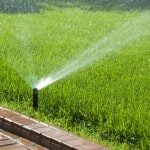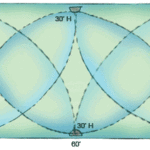This buying guide will help you choose the right ground covers for your home. Learn about different types of plants, their needs, and how to create a beautiful and functional landscape.
Choosing Ground Covers
Planting Ground Covers
Caring for Ground Covers
Choosing Ground Covers
Ground covers can blanket an area in greenery or fill it with colorful flowers and foliage. They spread easily and are a better choice than grass for hillsides and shade. Some can be used to discourage foot traffic; others can be walked on to a surprising degree. Many are drought tolerant and most are relatively low maintenance.
All in all, ground covers are a wonderfully versatile choice for a garden surface.
While junipers and ivies are traditionally popular ground covers, a surprising number of other plants may be an even better option for your situation.
Before you make a final decision, take a look at the area you want to cover. Ask yourself these questions:
- Is it sunny or shady?
- Is it level or sloping?
- Will it get occasional foot traffic?
- Can you provide regular water, or would it be better if the ground cover were reasonably drought tolerant?
- Do you want year-round greenery, or would you prefer color for at least part of the year?
- Your answers to these questions will help you narrow down your choices.
Sun versus shade with ground covers. While most ground covers do well in sun, a number of them are ideal for shadier conditions, growing well in areas where traditional lawn grasses would struggle.
Ground covers such as bishop’s weed (Aegopodium podagraria), carpet bugle (Ajuga reptans), creeping Jenny (Lysimachia nummularia), epimedium, forget-me-not (Myosotis), Japanese spurge (Pachysandra terminalis), sweet woodruff (Galium odoratum), wild ginger (Asarum), and violets (Viola) offer plenty of options for a shady garden.
Hillside ground covers. Hillsides pose one of the biggest challenges for a gardener. The ideal plants for them, especially if the slope is steep, are those that will help control erosion, are able to survive in shallow soil and windy conditions, and won’t need much cutting back. Among the best choices are Aaron’s beard (Hypericum calycinum), Australian saltbush (Atriplex semibaccata), cape weed (Arctotheca calendula), crown vetch (Coronilla varia), heath (Erica), lantana, and sageleaf rockrose (Cistus salviifolius).
Foot traffic and ground covers. Although ground covers can’t match a lawn’s hardiness when it comes to tolerating play and foot traffic, a number of ground covers make good substitutes in lesser-used areas.
Some of the best known are the fillers—plants used to fill in around stepping stones and pavers. These include baby’s tears (Soleirolia soleirolii), blue star creeper (Pratia pedunculata), Corsican sandwort (Arenaria balearica), jewel mint of Corsica (Mentha requienii), green carpet (Herneria glabra), Irish and Scotch moss (Sagina subulata), Mazus reptans, and thyme (Thymus).
Other ground covers that can take the place of a lawn in areas with light traffic include lippia (Phyla nodiflora) and chamomile (Chamaemelum nobile).
Water-saving ground covers. Unlike lawns, many ground covers do best with little water, making them a good choice for hot, dry climates. These include broom (Genista), Catalina perfume (Ribes viburnifolium), cotoneaster, germander (Teucrium), ice plants, Mexican or Santa Barbara daisy (Erigeron karvinskianus), trailing rosemary (Rosmarinus officinalis varieties), and wild lilac (Ceanothus).
Ground cover color. One of the greatest advantages that ground covers have over lawns is colorful flowers and foliage. Depending on your choice, you can have a seasonal color burst as with bergenia, candytuft (Iberis sempervirens), dwarf plumbago (Ceratostigma plumbaginoides), and snow-in-summer (Cerastium tomentosum) or longer-lasting blooms from plants like trailing African daisies (Osteospermum fruticosum), bellflowers (Campanula), gazanias, ground morning glory (Convolvulus sabatius), heath (Erica), ice plants, moss pink (Phlox subulata), periwinkle (Vinca), sunroses (Helianthemum nummularium), verbena, and yarrow (Achillea).
A newly popular choice is the ground cover rose, which is hardy and covered with blooms.
Lawn lookalikes. If you want the look of a lawn but not the upkeep, consider some of these grasslike plants. Although they won’t take the wear and tear of a real lawn, blue fescue (Festuca glauca), lily turf Liriope), mondo grass (Ophiopogon japonicus), and zoysia provide a grasslike look.
Planting Ground Covers
Though not all ground covers have exactly the same needs, the basics for getting them started are the same. Preparing the planting area is the key to success.
Start by ridding the area to be planted of any weeds, including their roots. If your site is relatively level, dig or till the area to about a foot deep. Add in any organic compost and a complete fertilizer, and rake the site to eliminate high spots and fill in low spots.
For hillsides, it’s best to leave the site as undisturbed as possible. If you wish, lay down landscape fabric before planting to prevent weed growth.
It’s best to plant in fall about one month before the first frost or in early spring before the growing season begins. Space plants to accommodate their mature size. If you’re covering a large area, stagger the rows so the plants are offset.
When planting from flats or cell packs, dig a hole just the depth of the rootball of each plant and slightly wider. Place each plant in the hole and fill in with garden soil. Water gently but thoroughly.
For larger plants, dig a hole slightly deeper than the rootball and twice as wide, with the sides tapered out slightly at the bottom of the hole. Create a small mound in the center of the hole, place the plant on the mound, and spread out the roots. The crown of the plant should be slightly above the soil level. Fill in with the soil you removed from the hole, and then mound additional soil around the edges of the planting hole to form a watering basin. Water thoroughly after planting and then add mulch around the plants.
If you’re planting on a hillside, set the plants out in a staggered pattern. For each plant, cut back into the hillside to create a flat spot, leaving enough room for the plant and a small watering basin behind it. Put the crowns slightly above the soil line so they won’t be overwatered by runoff. Water thoroughly and then add mulch around the plants.
Caring for Ground Covers
For the most part, ground covers require minimal maintenance. Probably the most important requirement is sufficient water. Even the most drought-tolerant ground covers will need additional water while they’re becoming established, and many perennial ground covers will need regular watering (although not as much water as most lawns).
For a small area, hand watering or portable sprinklers may be effective enough. For larger areas, though, consider using either drip irrigation or in-ground sprinklers.
Drip irrigation systems use less overall water. Because they deliver water directly to the plant roots, they encourage deep root growth, discourage weeds, and prevent water runoff and evaporation. Drip systems are especially good for hillside plantings.
For higher, shrubbier plants or ground covers that consist of masses of individual plants, an in-ground system is the best choice. Use a timer to ensure that you don’t overwater, and set the sprinklers so they don’t overspray onto hardscaping.
Ground covers generally don’t need much feeding. Shrublike ground covers and drought- tolerant plants are often fine with little fertilizer or with only fertilizing when you plant them. Perennial ground covers may need to be fertilized yearly, usually right before the growing season. And, of course, if your plants start to look pale or sparse, use a complete fertilizer to give them a boost.
Other periodic chores include weeding and keeping pests under control. Check the planting area on a regular basis and for weeds and garden pests before they become a big problem.
Even easy-care ground covers may need some help to keep them under control. Some ground covers can be invasive, spreading into neighboring garden beds. If they spread by seeds, pull them out, roots and all, from areas where they aren’t wanted. For those that spread by runners, cut them back with clippers or hedge shears. If they take over a large area, use a spade to cut through the roots.
You should always choose plants whose mature size is what you want, but occasionally you’ll find some branches that are growing too tall or too wide. Prune these errant branches back as you would a shrub or tree.
Some ground covers, such as Aaron’s beard and bishop’s weed, also benefit from an occasional mowing (with the blades set on high) to keep them in check and help rejuvenate them. Others, such as Australian saltbush, epimedium, moss pink, and phlox, should have spent blooms removed. If your overall ground cover starts to look woody and sparse, it may be time to replace it with new plants.



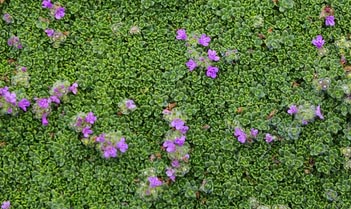
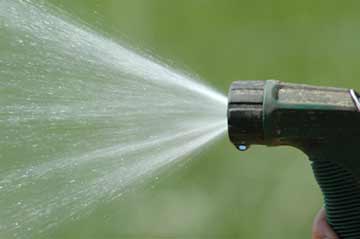

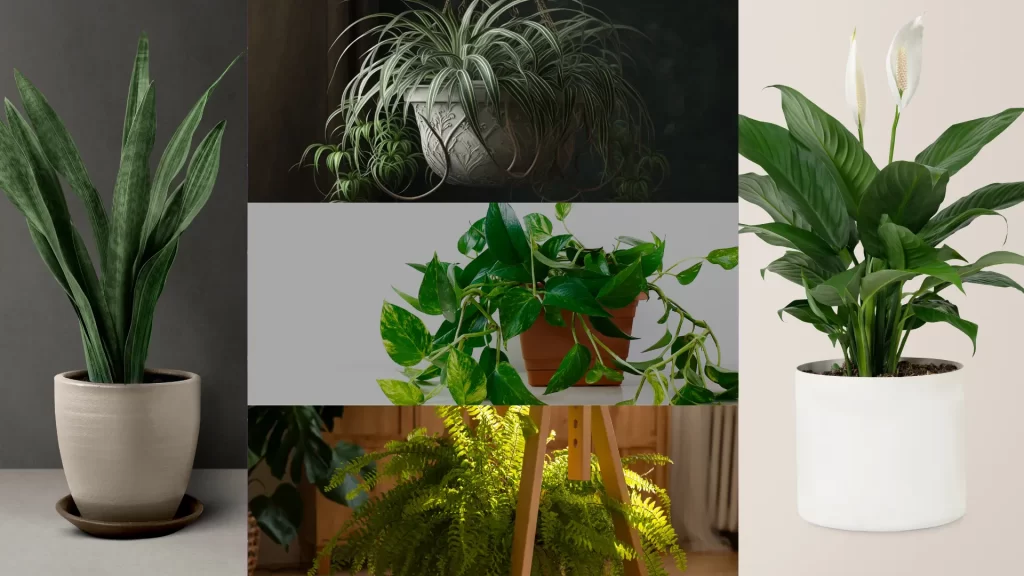


 Don Vandervort writes or edits every article at HomeTips. Don has:
Don Vandervort writes or edits every article at HomeTips. Don has:

